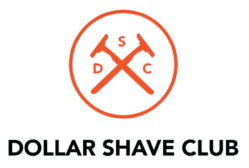this that this that
Brand Archetypes
The Jester
They’re jokers. They’re crack-ups. And if you’re not having fun, it’s their brand promise that they’ll ensure you do.
What is the Jester Brand Archetype?
The Jester is the archetype that doesn't take itself seriously, and thrives because of it. This is the brand that entertains. It earns laughs.
Fueled by Fun, Defined by Irreverence
Jester brands are driven by the belief that life's too short to be boring, that humor breaks down barriers, and that people are exhausted by brands that act like they're saving the world when they're just selling deodorant. They see the world as absurd and themselves as licensed to point that out. And they're not being funny for attention alone, they're doing it because joy matters. Because laughter connects. Because humor demands it. The pretense needs puncturing.
What are some examples of Jester brands?
- M&M's
- Old Spice
- Budweiser
- Dollar Shave Club
- Geico
The Psychology of The Jester Brand Archetype
Map this to the Enneagram and you get Type 7: The Enthusiast. The conviction that life should be enjoyed, that playfulness is a virtue, and that taking yourself too seriously is the fastest way to irrelevance.
Jesters are fueled by a need to entertain, disarm, and connect through humor. They believe that most of life is absurd, that brands pontificating about their "purpose" are hilarious, and that the best way to be remembered is to make people laugh. They ask: "Why so serious?" So they play. They joke. They never stop finding the funny.
This is why Old Spice doesn't just sell deodorant. They have created an entire comedic universe where a shirtless man on a horse can pivot from "Look at your man, now back to me" into absurdity. They understood that body wash is inherently not serious, so why pretend? Similarly, Dollar Shave Club launched with "Our Blades Are F***ing Great," a video so irreverent and hilarious it generated millions of views and made Gillette's serious spokesperson ads look ridiculous by comparison.
The Jester Brand's Promise
Every Jester brand makes the same core promise: "With us, you'll enjoy the ride," which is selling pleasure and entertainment. That is, the fun, laughs, and joy you need to make ordinary moments less ordinary.
Take M&M's. They never talked about chocolate quality. They became unforgettable by creating characters (color-coded candy mascots with distinct personalities who bicker, flirt, and get into absurd situations). "Melts in your mouth, not in your hand" is practical. But the Red M&M being an anxious neurotic and the Yellow M&M being a lovable idiot is fun, and entertainment. They understand you're buying a moment of pleasure.
Or consider Budweiser's classic advertising approach. "Wassup?" became cultural shorthand, the Clydesdales became Super Bowl traditions, and "Bud-weis-er" frogs infiltrated everyone's brain. They were selling the good times, the laughs, the moments when friends connect. Beer is social lubricant, and Budweiser positioned themselves as the life of the party.
The Jester Brand's Core Values
Fun Above All: Jesters prioritize enjoyment and entertainment. Old Spice could have competed on performance metrics or natural ingredients. Instead, they chose absurdist comedy (with Terry Crews screaming about POWER and Isaiah Mustafa doing impossible things while maintaining eye contact) scenarios so ridiculous they're unforgettable. Fun is simply, the strategy.
Irreverence as Authenticity: Jesters refuse to be precious about themselves or their category. Dollar Shave Club's entire launch was built on mocking the razor industry's self-importance in a video that went viral. "Do you think your razor needs a vibrating handle, a flashlight, a back-scratcher, and ten blades?" they asked, while their founder rode through a warehouse on a forklift. They called out absurdity everyone else pretended was normal.
Accessibility Through Humor: Jesters make everyone feel included. M&M's characters appeal to kids and adults, using humor that works across demographics. Red's sarcasm lands with adults; Yellow's innocence charms kids. Budweiser's "Wassup?" crossed cultural boundaries because humor is universal. Laughter is the ultimate democratizer.
Living in the Moment: Jesters celebrate now, not later. Budweiser doesn't sell you on retirement planning or legacy building, but they will sell you on tonight, this moment, these friends, this laugh. The beer in your hand is about the experience you're having right now. Jesters know that tomorrow's hangover is tomorrow's problem.
Self-Aware Playfulness: Jesters know exactly what they are and own it completely. Old Spice knows they're selling armpit smell prevention, not life transformation. That self-awareness allows them to be playful rather than pretentious. M&M's knows they're candy, not cuisine. The honesty creates permission for fun.
What are the Jester Brand's Sub-Archetypes?
While all Jesters share core values, they express them differently. Understanding these nuances helps brands fine-tune their positioning and messaging.
The Clown
Physical and absurdist, the Clown uses visual humor and exaggerated situations. Old Spice lives in Clown territory. Their ads feature men riding backwards on horses, transitioning impossibly between locations, flexing so hard things explode. It's physical comedy turned up to eleven. The Clown's potential pitfall can be becoming so absurd that the brand message disappears, or humor aging into annoying.
The Provocateur
Edgy and irreverent, the Provocateur uses shock and boundary-pushing humor. This "Faulty Towers," or "Monty Python." Dollar Shave Club embodied this perfectly, opening with "Our Blades Are F***ing Great" immediately signaled they weren't playing by category rules. They made fun of competitors, called out industry BS, and used humor with an edge. The risk is in going too far, offending instead of entertaining, or shock value wearing thin quickly.
The Character
Personality-driven and relatable, the Character creates memorable personas that carry the humor. M&M's operates entirely as the Characters themselves: Red, Yellow, Green, Orange, and Ms. Brown each have distinct personalities that drive storylines. The characters are the brand. Geico's gecko also lives here. The trap can be characters becoming stale, or limiting yourself to what those personas can credibly do.
The Party Starter
Social and celebratory, the Party Starter positions themselves as the catalyst for good times. Budweiser embodies this archetype—their entire brand promise is that beer brings people together for memorable moments. "This Bud's For You" positioned the beer as your companion in celebration. The danger lies in when "party" becomes "problem" (alcohol issues), or when cultural drinking patterns shift away from your brand positioning.
Building an Authentic Jester Brand
Your Humor Must Land: Don't manufacture forced comedy. Old Spice's absurdist approach works because it's committed, consistent, and actually funny. Dollar Shave Club's humor worked because it was genuine frustration with an absurd industry, not just jokes for jokes' sake. If your humor feels corporate-approved and focus-grouped, it's not going to be funny. It'll be cringe.
Know What You're Really Selling: Be honest about your category. Dollar Shave Club acknowledged razors aren't exciting. M&M's knows candy is impulse pleasure. Budweiser knows beer is social, not sophisticated. The humor flows from accepting what you actually are, not pretending to be something important.
Commit Completely: Half-hearted humor is worse than no humor. Old Spice didn't dip a toe into absurdism, they committed to the deep end. Terry Crews screaming while explosions happen works because they committed fully. Jesters can't hedge. Either you're funny or you're not.
Stay Fresh: Comedy has a shelf life. What's hilarious in one campaign becomes tired if repeated endlessly. Budweiser's "Wassup?" was cultural gold until it wasn't. M&M's evolves their character storylines. Old Spice rotates through different comedic approaches. Jesters must constantly refresh or risk becoming the joke instead of making the joke.
Never Punch Down: Jesters mock powerful, self-important targets, not vulnerable people. Dollar Shave Club made fun of Gillette's overpriced razors, not customers who bought them. Old Spice pokes fun at masculine tropes, not actual men. Humor that bullies isn't funny; it's cruel. Jesters need a moral compass.
Remember You're Still Selling: Entertainment can't completely overshadow the product. Old Spice's absurdist ads are unforgettable, but you still walk away knowing they sell body wash and deodorant. Dollar Shave Club's video is hilarious, but the value proposition is crystal clear. Jesters who forget they're brands become mere entertainment, fun, but unprofitable.
The Jester archetype endures because it speaks to something fundamental: the human need for joy, laughter, and relief from taking everything so seriously. In a culture increasingly characterized by performative seriousness, where every brand claims to be "purpose-driven" and solving world hunger while selling soap, Jester brands offer refreshing honesty and genuine entertainment.
They remind us that not everything needs to be profound. That laughter connects us better than lectures. That life's short and boring brands make it feel longer. And that the brands we remember fondest are often the ones that made us smile.
The Jester Connection Strategy
Through irreverence and originality, these brands aim for creating joy and fun wherever they go using humor and playfulness. These brands offer joy: Geico and the gecko, Dollar Shave Club and their original, Internet-breaking ad, or Budweiser’s frogs and lizards.
The Jester Brand Voice
Fun-loving
Playful
Optimistic
The Jester Brand Colors

Jester Brand Examples





